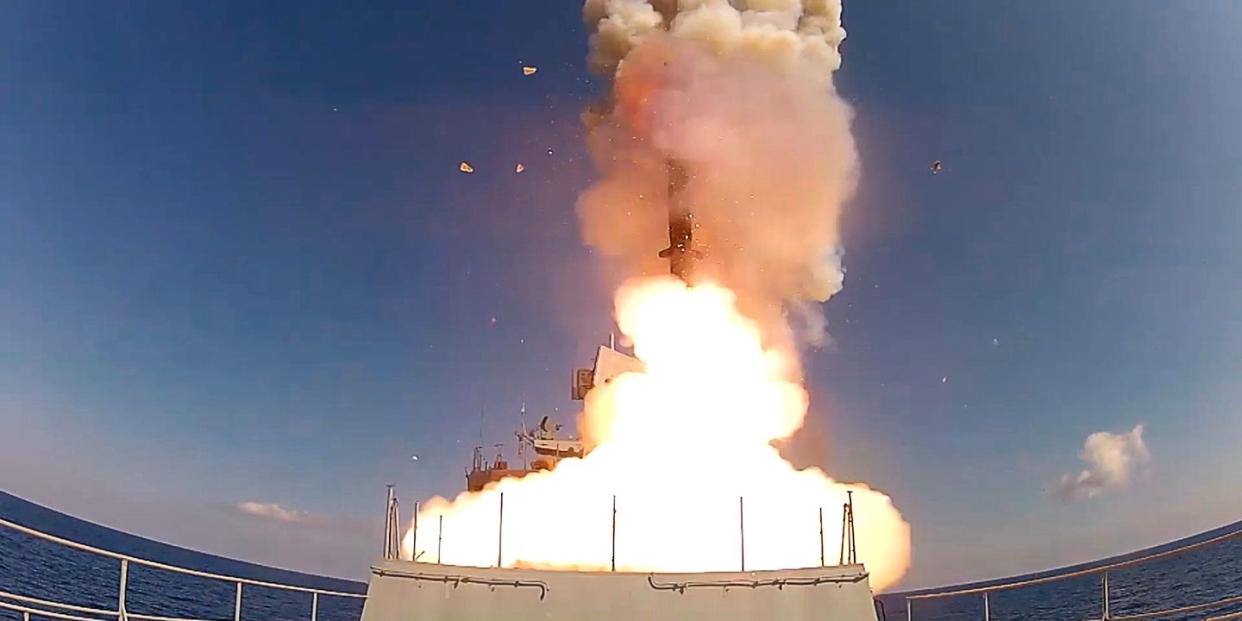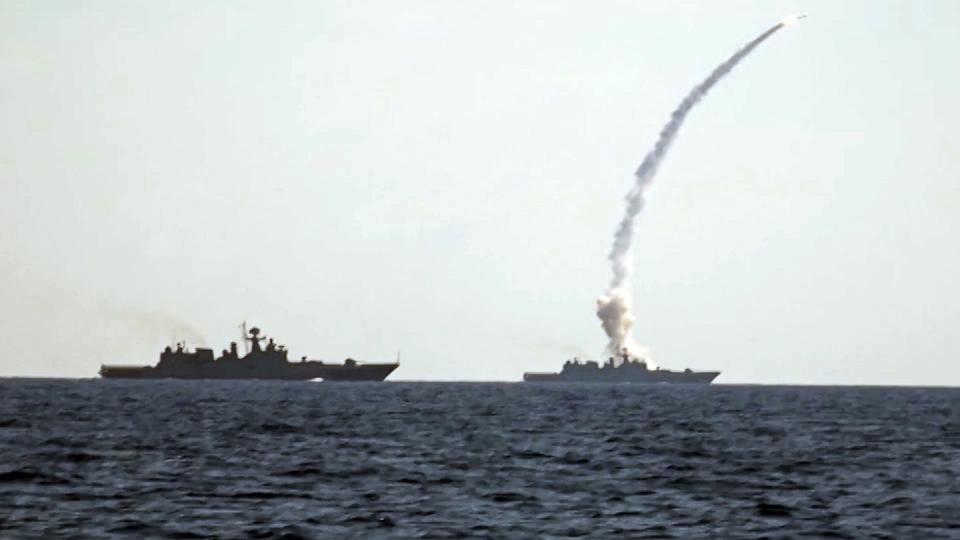Russia's New Warships Will Pack Hypersonic Missiles

Russia's new Zircon missile travels at a whopping Mach 9, or almost 7,000 miles an hour.
The sea-launched missile can strike targets on land or at sea.
All of Russia's modernized or upcoming warships will carry Zircon, giving them a weapon that even the U.S. Navy might not be able to stop.
All of Russia’s new and upcoming warships will carry a new hypersonic missile capable of traveling nearly 7,000 miles per hour. According to the head of Russia’s main warship manufacturer, all modern warships serving in the Russian Navy and those on the drawing board will carry the weapon. Zircon is reportedly capable of striking both ground and naval targets and is likely so fast as to make it unstoppable against modern naval defenses.
The head of Russia’s United Shipbuilding Corporation, Alexei Rakhmanov, told reporters that Zircon will arm “all the new Projects of ships” for the Russian Navy. Russian warships are typically known internally as a project number. For example, the older cruise missile submarine Irkutsk, known to NATO as part of the Oscar-class, is known within Russia as part of the Project 949A class.
Irkutsk, currently under modernization, was built in 1988 as a cruise missile submarine designed to carry up to 24 P-700 Granit anti-ship missiles. In wartime, Irkutsk and her sister ships were meant to hunt down and destroy U.S. Navy aircraft carriers and other high value targets. Now Irkutsk will carry Zircon missiles, presumably for the same mission.

Zircon was first mentioned in the mid-2010s. A hypersonic missile, it was supposedly being designed to travel at speeds in excess of Mach 5. Zircon was meant to be compatible with older Russian Navy ships in order to give them a new, updated weapon system.
Zircon has flown several flight tests and appears close to deployment on Russian Navy ships, particularly its new frigates and submarines but also older ships such as the Kirov-class battlecruisers. The first submarine launched test is scheduled for 2020. Zircon will be the first sea-based hypersonic weapon in any navy.
Zircon travels at speeds from Mach 7 to Mach 9 (depending on who you talk to). At Mach 9, Zircon travels at a staggering 6,905 miles an hour, or 1.91 miles a second. Russian sources claim the missile’s range can exceed 1,000 kilometers, or approximately 621 miles. Defense analyst H.I. Sutton states the missile can fly in either a semi-ballistic or low-level flight pattern and is capable of evasive maneuvers as it approaches its target.
A hypersonic missile, Zircon will be exceptionally challenging to defend against. In a ballistic profile, in which Zircon rockets high into the atmosphere and then zooms down onto its target, the SPY-1 radar on U.S. Navy guided missile cruisers and destroyers would have about 130 seconds to detect, track, lock onto, and then launch interceptors. The Navy’s odds against a low-flying Zircon are considerably worse, with detection time slipping to as little as ten seconds before the missile hits its target.
Another issue with defending against Zircon is whether or not the Navy’s newest anti-air missile, SM-6, can intercept an incoming Mach 9 missile. SM-6 has some ability to intercept ballistic missiles, many of which close at hypersonic speeds, but it’s unclear if SM-6 can target a low-flying hypersonic weapon.
Zircon—provided the reports are true and the missile is all it’s cracked up to be—seems to be a smart investment for the Russian Navy. Due to budgetary and technical issues, much of Russia’s surface fleet is old and their weapons obsolete. The Russian Navy has commissioned just one destroyer-sized ship since the end of the Cold War.
Source: Naval News
You Might Also Like

